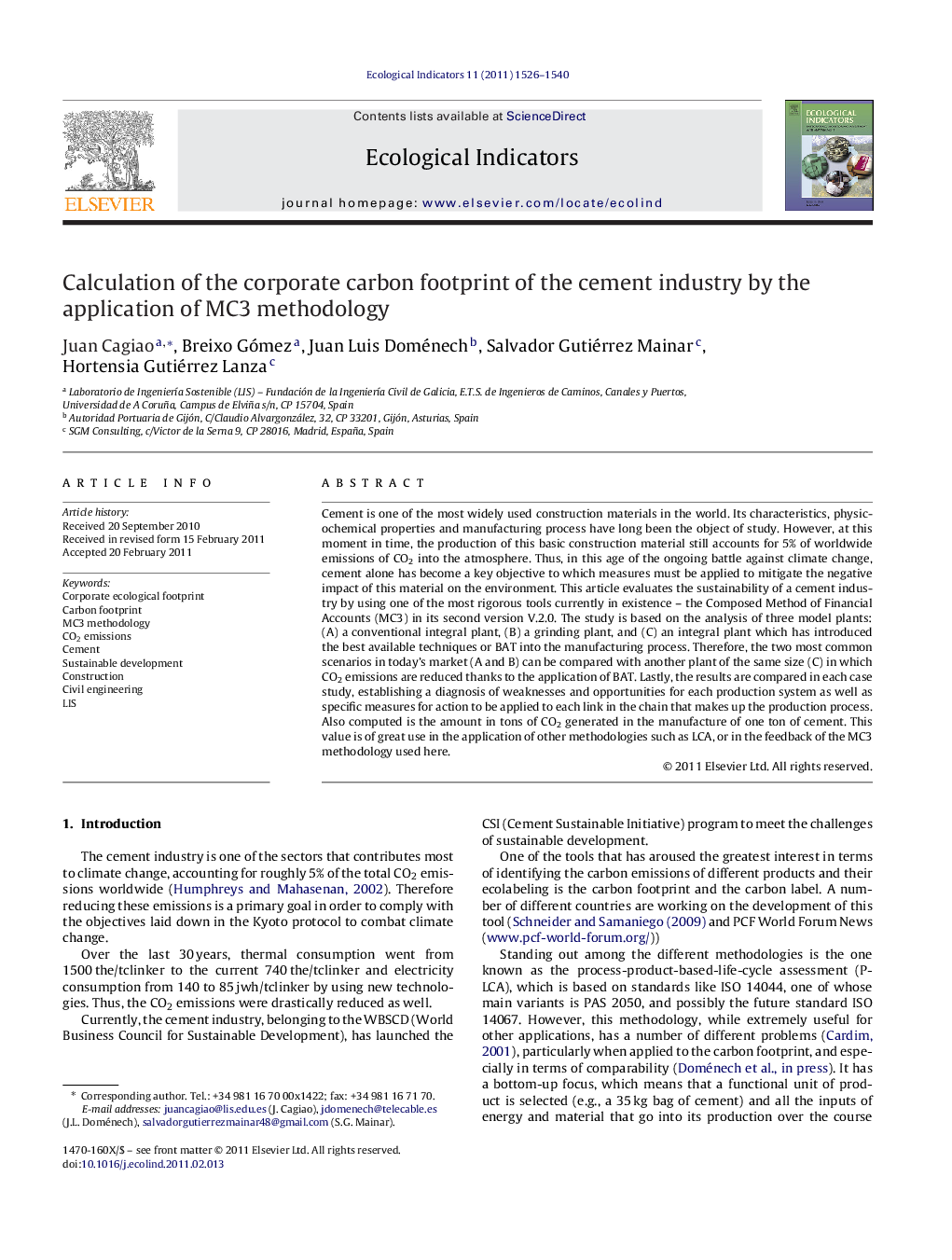| Article ID | Journal | Published Year | Pages | File Type |
|---|---|---|---|---|
| 4373969 | Ecological Indicators | 2011 | 15 Pages |
Cement is one of the most widely used construction materials in the world. Its characteristics, physicochemical properties and manufacturing process have long been the object of study. However, at this moment in time, the production of this basic construction material still accounts for 5% of worldwide emissions of CO2 into the atmosphere. Thus, in this age of the ongoing battle against climate change, cement alone has become a key objective to which measures must be applied to mitigate the negative impact of this material on the environment. This article evaluates the sustainability of a cement industry by using one of the most rigorous tools currently in existence – the Composed Method of Financial Accounts (MC3) in its second version V.2.0. The study is based on the analysis of three model plants: (A) a conventional integral plant, (B) a grinding plant, and (C) an integral plant which has introduced the best available techniques or BAT into the manufacturing process. Therefore, the two most common scenarios in today's market (A and B) can be compared with another plant of the same size (C) in which CO2 emissions are reduced thanks to the application of BAT. Lastly, the results are compared in each case study, establishing a diagnosis of weaknesses and opportunities for each production system as well as specific measures for action to be applied to each link in the chain that makes up the production process. Also computed is the amount in tons of CO2 generated in the manufacture of one ton of cement. This value is of great use in the application of other methodologies such as LCA, or in the feedback of the MC3 methodology used here.
